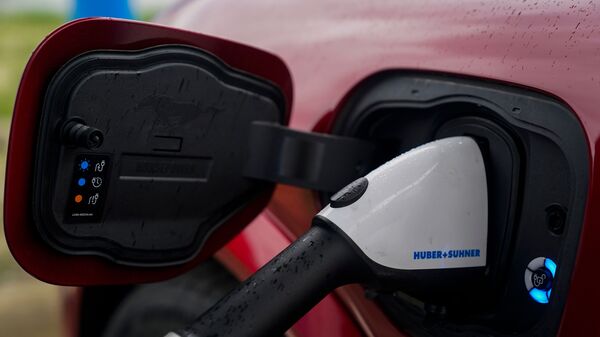
US automakers win extension on use of Chinese graphite in EV tax credits
By Sumaiya | Published | No Comments
China currently accounts for 70% of global production of graphite, which is used to make electric battery anodes, the negatively charged part.
…

The US Treasury Department on Friday gave automakers additional relief on battery mineral requirements for electric vehicle tax credits on some critical trace minerals such as graphite from China.
The department said it will give automakers until 2027 to eliminate hard-to-trace minerals such as graphite in anode materials and critical minerals in electrolyte salts, binders and additives.
New rules banning Chinese materials in batteries eligible for EV tax credits of up to $7,500 took effect Jan. 1, sharply reducing the number of eligible vehicles. Automakers have since made changes to supply chains and won reinstated eligibility for many vehicles.
Also Read: Chinese Govt Continues EV Subsidies Amid Supply Gap Here’s why
The Treasury has temporarily exempted graphite and other trace critical minerals from strict new rules restricting materials from China and other countries considered Foreign Entities of Concern (FEOC), including North Korea, Russia and Iran.
John Bozella, who heads the Alliance for Automotive Innovation, which represents major automakers, said the new Treasury rules “appear to recognize the realities of the global supply chain by providing some temporary flexibility in terms of where critical minerals in EV batteries can be sourced.”
Senate Energy Committee Chairman Joe Manchin slammed the decision on Friday, saying the administration has made it clear it will “break the law in pursuit of its goal of flooding the market with electric vehicles as quickly as possible.” He said the Treasury “has provided a long-term path for these (FEOC) countries to remain in our supply chain.”
The new rules, required under the August 2022 law, are designed to move the US EV battery chain away from China.
Abigail Hunter, executive director of SAFE’s Center for Critical Minerals Strategy, said the Treasury’s decision to create a two-year exemption for graphite sourcing should be temporary.
“We need a clear exit strategy, lest we continue our reliance on competitors and further undermine the competitiveness of US and associated complex mineral projects,” Hunter said.
China currently accounts for 70% of global production of graphite, which is used to make electric battery anodes, the negatively charged part of batteries.
The FEOC rules went into effect on January 1 for battery components and will do so for complex minerals used in their manufacture in 2025.
The Treasury said in December that each of the materials exempted is less than 2% of the value of battery-critical minerals.
Manufacturers can temporarily exclude certain impractical-to-trace battery materials from FEOC compliance until 2027, Treasury said, as long as they demonstrate how they plan to comply by then.
“Imagine an EV that complies with all IRA qualification requirements but is kicked out of the program due to trace amounts of a critical mineral from FEOC?” Bozella said. “That doesn’t make any sense.”
The 2022 law allowed qualified EV buyers to use the tax credit as a point-of-sale rebate beginning this year.
So far in 2024, more than 100,000 credits have been used at the point of sale, representing more than $700 million in upfront savings, Treasury said.
Date of first publication: 06 May 2024, 06:47 AM IST
| Denial of responsibility! Thelocalreport.in is an automatic aggregator around the global media. All the content are available free on Internet. We have just arranged it in one platform for educational purpose only. In each content, the hyperlink to the primary source is specified. All trademarks belong to their rightful owners, all materials to their authors. If you are the owner of the content and do not want us to publish your materials on our website, please contact us.The content will be deleted within 24 hours. |





